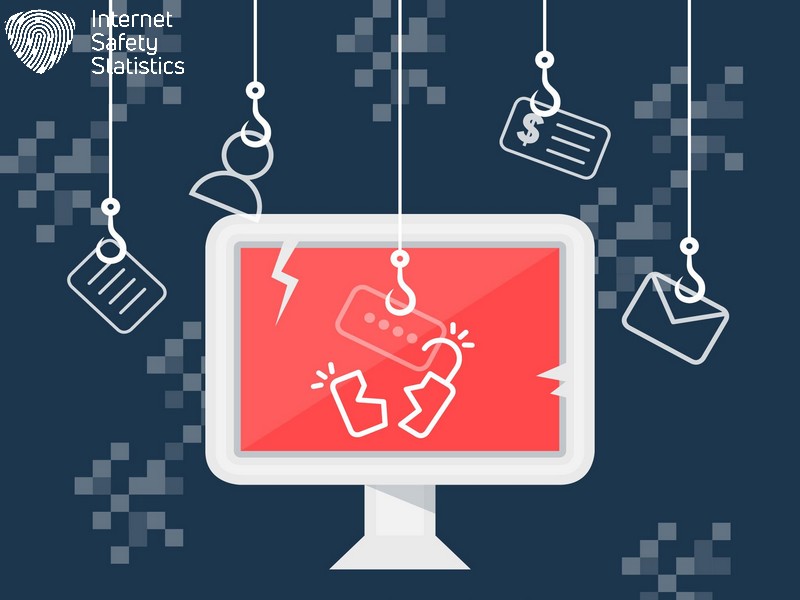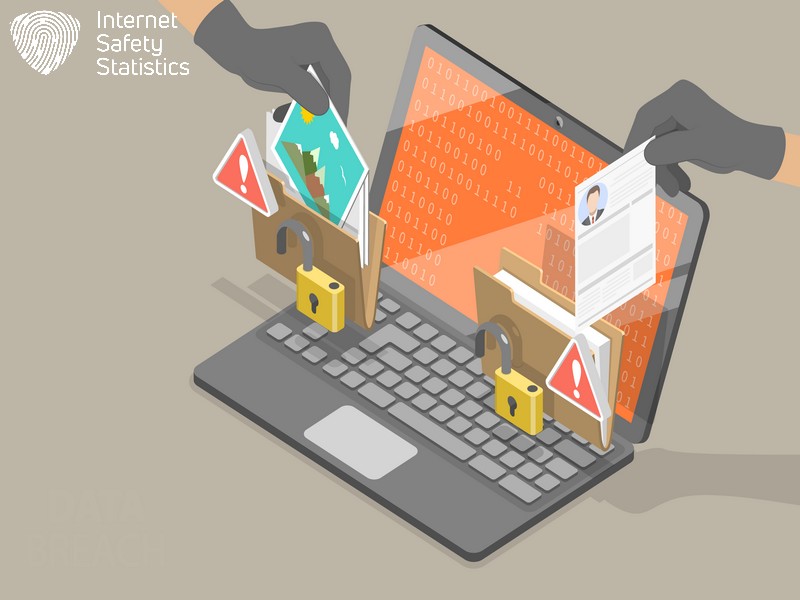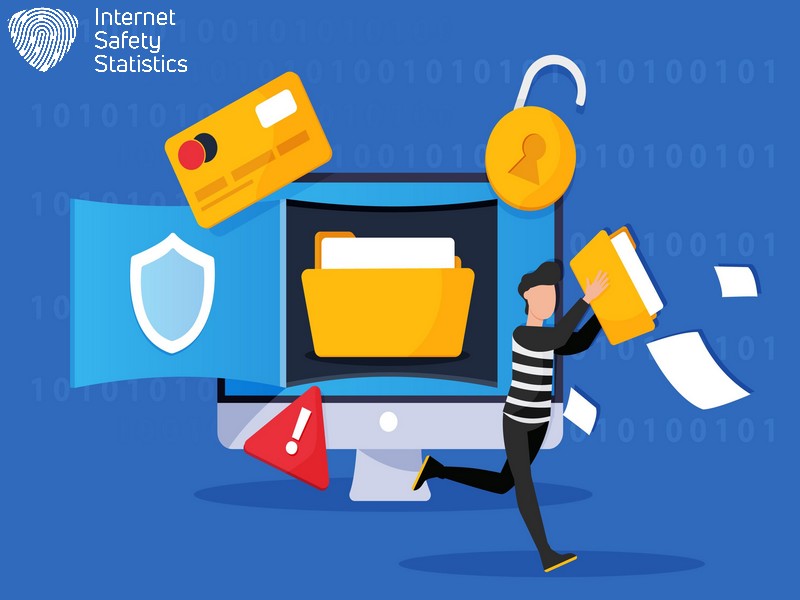
The ever-present threat of data breaches casts a long shadow in today’s digital world. Sensitive information, from personal details to financial records, can be compromised at any time, posing significant risks for individuals and businesses. This comprehensive guide equips you with the knowledge to fortify your defences. We’ll explore proactive strategies for data breach prevention, including robust security measures and awareness training. Additionally, we’ll outline clear response plans to minimize damage during a breach, ensuring a swift and effective recovery process. Following these steps, you can confidently navigate the digital landscape, safeguarding your valuable data.
This guide will arm you with prevention strategies and clear response plans to protect your family or business against such cyber nightmares. Dive in to safeguard your data!
Understanding Data Breaches
A data breach refers to the unauthorised access, disclosure, or acquisition of sensitive information. It can be caused by human error, malicious attacks, or technical vulnerabilities and can have severe financial and reputational consequences for businesses. Understanding the causes and impact of data breaches is essential for developing effective prevention techniques.
Definition of a Data Breach
A data breach occurs when confidential, sensitive, or protected information is accessed or disclosed without authorisation. This might involve personal details like social security numbers, financial records, health information, or any data that can compromise privacy. Cybercriminals often orchestrate these breaches through hacking attacks on a business’s digital infrastructure. However, breaches can also result from internal negligence or inadequate cybersecurity measures.
Handling such incidents requires swift and decisive actions to mitigate damage; this includes having an incident response team in place as soon as the breach is detected. Given their rising prevalence, being prepared with a thorough understanding of data breaches is increasingly crucial for anyone using digital services – parents overseeing their children’s online activities, office workers securing company databases, and internet users safeguarding personal accounts against unauthorised access are all stakeholders in this arena.
Causes of Data Breaches
After understanding what constitutes a data breach, it’s important to know the various causes that can lead to such incidents. Here are some common reasons why data breaches occur:
- Insufficient cybersecurity measures: Inadequate protection protocols and outdated security systems can leave organisations vulnerable to cyber-attacks.
- Human error: Mistakes made by employees, such as falling victim to phishing scams or misplacing devices containing sensitive information, contribute significantly to data breaches.
- Malicious attacks: Deliberate actions by hackers, including malware infections, ransomware attacks, and social engineering tactics, can compromise data security.
- Third-party vulnerabilities: Weaknesses in the security of external vendors and partners who have access to an organisation’s data can result in breaches.
- Poorly protected endpoints: Unsecured devices and unencrypted data on laptops, mobile devices, and other endpoints pose a significant risk to data security.
- Insider threats: Disgruntled or negligent employees with access to sensitive information may intentionally or unintentionally cause a breach.
- Lack of encryption: Failure to encrypt stored and transmitted data makes it easier for unauthorised individuals to access confidential information.
- Vulnerable applications: Security flaws in software applications and systems create opportunities for cybercriminals to exploit weaknesses and compromise data integrity.
Impact of Data Breaches
Data breaches can significantly impact individuals, exposing their personal information to misuse. This can lead to financial fraud, identity theft, and emotional distress for the affected individuals. For businesses, data breaches can result in reputational damage, legal penalties, and loss of customer trust. Organisations must understand the far-reaching consequences of data breaches and take proactive measures to prevent them.
Moreover, the rising risk of data breaches has implications for risk management planning, urging businesses to prioritise robust security protocols and detection mechanisms.
Data Breach Prevention Techniques
Learn about the importance of prevention, strategies for risk management, and essential IT security measures to protect against data breaches. Understand the significance of encryption and data backup in safeguarding sensitive information.
Importance of Prevention
Preventing data breaches is crucial for businesses and organisations to safeguard sensitive information from falling into the wrong hands. Implementing robust data breach prevention techniques, such as risk management strategies, IT security measures, encryption, and data backup, can significantly reduce the likelihood of a breach.
Equipping employees with the knowledge and tools to identify potential risks and respond effectively in case of a breach is equally important. Businesses must stay proactive by conducting regular risk assessments and staying updated on evolving cybersecurity threats.
Understanding which breach services are essential before they’re required can make all the difference in minimising the impact of a data breach. By prioritising prevention efforts alongside solid response plans, businesses can protect themselves against the potentially devastating consequences of a data breach.
Risk Management Strategies

Various methods come under data breach risk management strategies. These strategies include tasks by the IT security team and encryption and data backup methods. We will explore these strategies further.
IT Security Measures
Your IT team is responsible for devising a proper cybersecurity response plan to implement directly during a cyberattack. However, the IT team is also responsible for numerous other tasks, that include the following:
- Regularly update antivirus software to protect against malware and other cyber threats.
- Utilise secure passwords and multi-factor authentication to enhance login security.
- Regular network monitoring and intrusion detection are conducted to identify unusual activities.
- Encrypt sensitive data to prevent unauthorised access in case of a breach.
- Secure networks with firewalls to filter out potentially malicious traffic.
- Establish employee training programmes on recognising phishing attempts and other social engineering tactics.
- Implement access controls to limit the exposure of sensitive data to authorised personnel only.
- Backup critical data regularly and store it securely to ensure quick recovery in a breach.
- Employ secure web browsing practices, including using HTTPS connections and avoiding suspicious websites.
Encryption and Data Backup
After implementing IT security measures, the next important step in data breach prevention is encryption and data backup. These techniques play a crucial role in safeguarding sensitive information from unauthorised access and ensuring that data remains accessible even during a breach.
- Encryption: Data encryption involves converting sensitive information into a code to prevent unauthorised access. Implementing robust encryption protocols for all stored and transmitted data adds an extra layer of security, making it challenging for hackers to decipher the information.
- Data Backup: Regularly backing up data is essential for mitigating the impact of a potential breach. It ensures that redundant copies are available for recovery even if the original data is compromised. Automated backup solutions provide added convenience and reliability in maintaining copies of critical information.
- Secure Storage: Storing encrypted data and backups in secure locations, whether on-premises or through trusted cloud services, further enhances protection against potential breaches or data loss events.
- Compliance Considerations: Adhering to relevant data protection regulations and industry standards when implementing encryption and backup strategies is crucial for legal compliance and maintaining trust with customers and stakeholders.
- Testing and Maintenance: Regular testing of encryption methods and backup procedures helps identify any vulnerabilities or weaknesses in the systems, allowing organisations to improve their data protection practices.
- Employee Training: Educating employees about the importance of encrypting sensitive data and following proper backup protocols contributes to a culture of security awareness within the organisation.
- Incident Response Integration: Integrating encryption key management and backup processes into incident response plans ensures a coordinated approach towards addressing breaches while minimising disruption to business operations.
- Proactive Monitoring: Implementing tools for monitoring encrypted data transmissions and detecting anomalies within backup systems enables early detection of potential threats or irregularities.
Preparing for a Data Breach

An emergency response plan is crucial for effectively dealing with a data breach. Training employees on data security and conducting regular risk assessments are important steps in preparing for a potential breach.
Creating an Emergency Response Plan
Creating an emergency response plan that outlines the necessary steps is crucial to prepare for a data breach. Here are the key components of an effective data breach emergency response plan:
- Assemble a Response Team: Establish a team with specific roles and responsibilities in the event of a breach. This team should include IT, legal, communications, and senior management members.
- Incident Identification and Assessment: Define clear procedures for identifying and assessing potential breaches. Ensure that employees know how to recognise signs of a data breach and escalate incidents promptly.
- Communication Protocols: Develop communication protocols for internal and external stakeholders, including employees, customers, regulatory authorities, and the media. Clear lines of communication are essential during a breach.
- Data Backup and Recovery Procedures: Implement robust data backup processes to ensure that critical information can be restored in case of a breach. Regularly test these backup systems to verify their effectiveness.
- Legal Compliance Measures: Understand the legal obligations related to data breaches in your jurisdiction and ensure compliance with relevant laws and regulations.
- Training and Testing: Conduct regular training sessions for employees on the emergency response plan and simulate mock breach scenarios to test its effectiveness.
- Continuous Improvement: Regularly review and update the emergency response plan based on lessons learnt from security incidents or regulation changes.
- Documentation and Reporting: Document all actions taken during a breach incident for compliance purposes and reporting requirements.
Training Employees on Data Security
Training employees on data security is crucial to prevent data breaches and protect sensitive information. Here are key points to consider when training employees on data security:
- Regularly conduct training sessions to educate employees about the importance of data security and the potential impact of a breach on individuals and the organisation.
- Provide practical demonstrations and scenarios to help employees understand how breaches can occur and the actions they should take to prevent them.
- Ensure that employees are familiar with company policies and procedures related to data security, including handling sensitive information, using secure systems, and reporting suspicious activities.
- Emphasise the significance of strong password management, two-factor authentication, and best practices for securing devices such as laptops, smartphones, and tablets.
- Encourage a culture of vigilance among employees by promoting awareness of phishing scams, social engineering tactics, and other common methods cyber criminals use.
- Offer regular updates on emerging threats, new security measures, and regulation changes to keep employees informed and prepared to address evolving risks.
Conducting Regular Risk Assessments
Risk assessments are vital to check for system vulnerabilities and regularly detect possible cyberattack backdoors. These assessments also include evaluating security controls and reviewing compliance requirements.
- Identifying sensitive data: Regularly assess and classify the sensitive information your organisation collects or stores.
- Evaluating security controls: Examine the effectiveness of current security measures, including access controls, encryption, and monitoring systems.
- Assessing potential threats: Analyse risks such as phishing attacks, malware infections, and insider threats.
- Reviewing compliance requirements: Ensure that your organisation meets legal and regulatory standards related to data protection and privacy.
- Updating risk management strategies: Based on assessment findings, update risk management strategies to effectively address new threats and vulnerabilities.
Responding to a Data Breach
When a data breach occurs, acting quickly and decisively is crucial. Steps to take include containing the breach, assessing the impact, notifying appropriate parties, and providing support for those affected.
Steps to Take When a Breach Occurs
When a data breach occurs, the most important step is working swiftly to stop any data leakage. There are more steps to ensure you contain the incident, detect the possible cause and how to prevent any future attacks.
- Notify the appropriate parties immediately, including your IT team, data protection officer, and legal counsel.
- Secure all affected systems and networks to prevent further unauthorised access.
- Preserve evidence by documenting the incident, including when and how the breach occurred and what data was compromised.
- Communicate transparently with those impacted by the breach, providing clear and accurate information about what happened and what steps you take to address it.
- Comply with legal requirements for reporting the breach to regulatory authorities or affected individuals.
- Conduct a thorough investigation to determine the root cause of the breach and identify any vulnerabilities that need to be addressed.
- Review your security protocols and update them as necessary to prevent future breaches.
- Support affected individuals, such as credit monitoring services or identity theft protection.
- Evaluate your response to the breach and identify opportunities for improvement in your data security practices.
Notifying Appropriate Parties
When a data breach occurs, notifying the appropriate parties is crucial. By promptly informing the relevant individuals and entities, you can minimise the impact of the breach and demonstrate transparency and accountability. Here are the steps to follow when notifying appropriate parties:
- Notify affected individuals: Inform customers, employees, or any individuals whose personal information may have been compromised.
- Notify regulatory authorities: Comply with data breach notification laws by reporting the incident to the relevant regulatory bodies.
- Notify law enforcement: If sensitive information has been compromised, it’s important to involve law enforcement to investigate and take appropriate action.
- Notify partners and vendors: Inform any third-party organisations or service providers that may have been affected by the breach.
- Notify insurance providers: If your business has data breach insurance, notify your insurance provider immediately.
- Inform legal counsel: Seek legal advice to understand your obligations and potential liabilities resulting from the breach.
- Communicate with the public: To maintain transparency, communicate clearly and timely through press releases or public statements.
- Offer support and resources: Ensure affected individuals access resources for identity protection and support services.
Handling Customer Concerns
When a data breach occurs, addressing customer concerns promptly and transparently is crucial. Open communication and clear information about the steps taken can help rebuild trust with affected individuals. Offering support, such as credit monitoring services or identity theft protection, demonstrates that their well-being is a priority for your organisation.
Businesses must also ensure compliance with data breach notification laws, often requiring timely notification to affected customers. Guiding how to protect themselves from potential fraud or misuse of their personal information can further reassure them during this challenging time.
Other Data Breach Considerations

Data breach insurance, cross-border data transfers, and compliance with GDPR are crucial aspects of comprehensive data breach prevention and response. To learn more about these important considerations, keep reading our guide.
Data Breach Insurance
Data breach insurance is essential to a comprehensive data breach response plan. It provides financial protection against the costs associated with managing and recovering from a data breach, including legal expenses, notification costs, credit monitoring for affected individuals, and public relations efforts to restore business reputation.
This type of insurance also covers potential fines and penalties resulting from non-compliance with data protection regulations such as GDPR. Understanding which breach services are covered by the insurance policy before they are needed is crucial, as it ensures businesses have the necessary support in place when facing a breach.
In today’s digital landscape, where data breaches are on the rise, having data breach insurance can provide peace of mind for businesses while demonstrating their commitment to protecting customer information.
Cross-Border Data Transfers
Businesses that transfer data across international borders must be aware of the legal and regulatory implications. Understanding the laws and regulations related to cross-border data transfers, including GDPR compliance, is essential for safeguarding sensitive information.
Encryption and secure communication channels can help protect data during cross-border transfers, ensuring compliance with privacy protection laws. Knowledge of these requirements is crucial for businesses looking to prevent data breaches in cross-border scenarios.
International standards for protecting student privacy also play a significant role in cross-border data transfer considerations. Ensuring adherence to best practices when transferring personal or sensitive information internationally is vital for minimising the risk of unauthorised access or breaches.
Complying with GDPR
Businesses must ensure compliance with the General Data Protection Regulation (GDPR) to protect individuals’ data. Implementing measures such as obtaining explicit consent for data processing and ensuring the security of personal information is vital. GDPR also requires businesses to appoint a Data Protection Officer responsible for monitoring compliance and as a point of contact for data subjects and supervisory authorities.
Failure to comply with GDPR can result in significant financial penalties, making it crucial for organisations to prioritise adherence. As we delve deeper into understanding the implications of GDPR compliance, we must explore best practices for managing cross-border data transfers.
Understanding data breaches and their potential impact is crucial for businesses. Equipping your organisation to prevent a data breach and responding effectively are vital steps. Assembling a team of experts, creating an emergency response plan, and training employees are essential. Knowing which breach services are needed before they are crucial for effective breach management. Data breach prevention techniques and risk management strategies play a significant role in protecting sensitive information.
